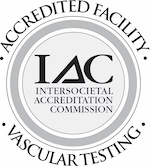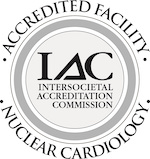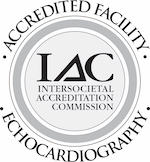Venous Blood Clots / Venous Thrombosis
Any time blood begins to pool and is not flowing properly through the veins, there is a risk for it to coagulate and create a blood clot. Blood clots affect millions of Americans each year and have varying consequences, depending on where they are located and which blood vessels or structures they are affecting. Venous blood clots usually occur in the legs and come in two forms – superficial and deep. Most superficial vein blood clots are simply monitored and do not need treatment. Deep vein blood clots known as Deep Vein Thrombosis or DVT can be very dangerous.
The Causes of Venous Blood Clots
When blood flow is slowed significantly, most often the legs, blood clots have a higher chance of forming. The most common reasons for slowed blood flow include:
- Physical inactivity due to long travel on a train, car, bus or plane
- Advanced age
- Being on extended bed rest after major surgery or due to a disease
- Breakdown of valves within the vein causing blood to backup within the vein (this is also a common cause of varicose veins)
- Obesity and poor diet
- Pregnancy
- Genetic predisposition
The Signs and Symptoms of a Blood Clot
Patients often suspect that they may have a blood clot. Swelling below the knees is a common sign of superficial blood clots. The area around the blood clot may also be affected – redness and swelling is not uncommon. Some blood clots may also cause mild or moderate pain.
Deep vein blood clots are not always symptomatic. If they do show symptoms – about 50% of DVT’s do – they usually present with pain, redness and swelling. Learn more about DVTs
Treatment for Blood Clots
Diagnosing a blood clot is relatively straightforward and your physician will begin with the physical exam as well as asking questions about your recent travels or lifestyle habits that may increase the risk of a clot. In some cases, imaging technologies such as a duplex ultrasound may be used to check blood flow in the veins and visualize any clotting. Advanced imaging technology may also be needed for difficult to diagnose pain issues. This may include MRI, CT or blood clotting tests.
For some blood clots, watchful waiting may be the best option as the risks of medical treatment may be greater than the risks of leaving the blood clot alone. This is usually the case for superficial vein clots that have few or no symptoms. For these clots, lifestyle changes may be sufficient. Raising your legs above the level of your heart, moist heat compresses, improved diet and lifestyle including better hydration and increased activity may be the best course of treatment.
More dangerous blood clots are those that are causing significant symptoms or pain. Clot-busting medication also known as anticoagulants are often the first and best course of action. Some patients will not respond well to anticoagulants and may need a filter known as an Inferior Vena Cava or IVC filter. This filter is placed within the vein by way of a specially made catheter. Our highly experienced interventional cardiologists here at Huntington Heart Center typically perform this procedure.







